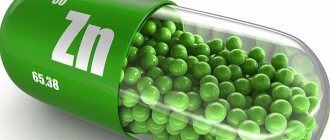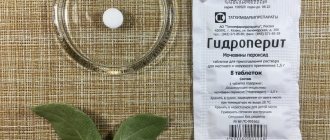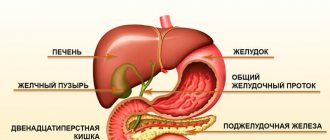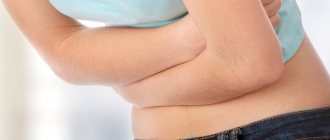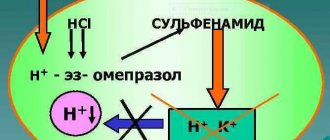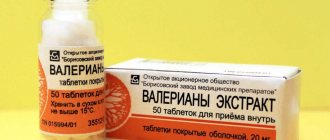From this article you will learn:
- how effective is retinol for the face,
- what forms of retinol are there,
- effective concentrations, timing of application.
The article was written by a specialist with higher medical education.
Retinol is one of the most effective ingredients in anti-aging cosmetics, which helps even out skin tone and texture, increase skin elasticity, and reduce the appearance of fine lines and wrinkles. Retinol is just one of many forms of vitamin A, which also include retinoic acid and retinaldehyde, as well as the so-called retinol esters (for example, retinol palmitate or retinol acetate).
Below you will see that real pure retinol and retinol esters are completely different in effectiveness forms of vitamin A. And it is preferable that retinol for facial skin be present in cosmetic products in the form of pure retinol, and not its esters. And below we will tell you why this is so important and how it affects the effectiveness of correcting age-related skin changes.
The best companies producing retinol products are:
The author of this article has a medical education and problem skin, so I know from personal experience all the nuances of using products with retinol, and which of them really work. In the photo above are the best products with retinol (one of the many that I have tried), which are produced by SkinCeuticals (USA) and ZO® Skin Health (USA). And these companies truly produce the most effective products with pure retinol - compared to many other products I have tried.
In this article we will talk about the criteria for choosing retinol products for the face so that they are truly effective. And of course, the main criteria will be the choice of the correct form of retinol, as well as its correct concentration. We will also talk about the duration of courses for correcting age-related changes using cosmetics with retinol, and when you can notice the first visible results.
Retinol and other forms of vitamin A –
Below we list all the main forms of vitamin A that can be found in anti-aging cosmetics - in descending order of their effectiveness:
- retinoic acid (tretinoin),
- retinaldehyde (retinal),
- retinol,
- retinol esters (retinol palmitate and retinol acetate).
The chemical formula of pure retinol is
Our skin has receptors for retinoic acid (the so-called RAR receptors), and it is their stimulation that leads to gradual rejuvenation of the skin. Retinoic acid is the strongest form of vitamin A, and it is also the only form that can interact with RAR receptors. Other forms of vitamin A are able to bind to these receptors - only after a series of metabolic transformations into each other.
For example, retinol esters, as a result of hydrolysis, must first turn into pure retinol, which then turns into retinaldehyde, which in turn turns into retinoic acid (tretinoin). And only retinoic acid already affects RAR receptors. Why is this so important? The fact is that there is a strict pattern: the more transformation cycles required for the original form of vitamin A in the composition of the product - to retinoic acid, the weaker the final effect of the cosmetic product will be.
How does retinol work for acne?
Points of application of retinol and its derivatives for acne:
FOLLICULAR HYPERKERATOSIS
Retinoids, like AHA acids, are able to break the bonds between keratinocytes, stimulating their exfoliation, inhibit the excessive proliferation of the ductal epithelium, thereby cleanse the pores on the face and eliminate their blockage.
CLOSED COMEDONS
Through the hair follicle, retinoids are able to penetrate right up to the ducts of the sebaceous glands, where they also stimulate exfoliation and elimination of accumulated sebum, which stretches the sebaceous glands, turning them into retention cysts.
Result : a large number of dead cells do not accumulate in the ducts and their removal to the outside improves, which removes the blockage of the duct - sebum accumulated in the gland comes to the surface of the skin.
INFLAMMATION
Retinoids are antioxidants that further reduce the production of proinflammatory cytokines and other inflammatory factors (eg, IL-1β, TNF-α, and nitric oxide NO).
Important : inflammation is recognized as a key factor provoking the severity of the acne process, and, therefore, the main starting point for acne therapy.
PATIENT
Retinoids indirectly inhibit the proliferation of P. acne bacteria, preventing the formation of antibiotic resistance in bacteria that form skin microbiologists.
IMMUNE FUNCTION OF THE SKIN
Retinoids block important inflammatory pathways such as AP-1, as well as leukocyte migration and toll-like receptors. In addition, retinoic acid (one of the forms of retinol, formed inside the skin during the transformation of retinol) affects Langerhans cells - skin macrophages, increasing their readiness for phagocytosis and migration to the site of inflammation.
PREVENTION OF POST-ACNE
According to clinical observations, early use of retinoids to correct acne minimizes the risk of scarring.
Also, topical retinoids reduce the risk and clinical manifestation of post-acne hyperpigmentation. The higher the dose of topical retinoids, the greater the preventive effect.
Retinol acetate and retinol palmitate –
Retinol acetate is the weakest even when compared to other retinol esters. It is not included in cosmetic products, but in pharmacies it is sold either in the form of capsules or in the form of a 3.44% solution (in the form of a dropper bottle). Very often you can hear recommendations - apply a few drops of retinol acetate to your face, or add it to your cream. Of course, you can do this, but the maximum that this will give is an increase in skin hydration by increasing its hydrophobic properties, as well as a decrease in the thickness of the stratum corneum.
Retinol palmitate (retinyl palmitate) - sold in every pharmacy in the form of an oral solution. 1 ml of solution contains 100,000 units of retinol palmitate, which corresponds to approximately 55 mg, and thus the concentration of the solution is 5.5%. Some also recommend applying it to the face or adding it to a cream. But if compared with pure retinol, then retinol palmitate turns out to be about 20 times weaker than it, but due to its low cost and high stability, it is most often included in inexpensive cosmetics in the mass market segment (which is not intended for the correction of pronounced age-related changes).
The fact is that in the skin, retinol palmitate is converted only to a very small extent into pure retinol, which, accordingly, practically does not reach the dermis, where the main target cells - fibroblasts - are located. Retinol palmitate is primarily absorbed by keratinocytes (the cells of the epidermis), which have systems for storing it. The accumulated retinol palmitate is used by keratinocytes for their own needs - increased proliferation of stem keratinocytes occurs near the basement membrane + the thickness of the deep layers of the epidermis increases.
In addition, the thickness of the stratum corneum of the epidermis, consisting of dead keratinocytes, decreases. All of the above can improve skin tone and texture. Perhaps the smallest fine lines will go away, but not due to increased collagen production in the dermis, but due to a decrease in the thickness of the stratum corneum of the epidermis (peeling effect). But you should not count on reducing the depth of wrinkles, lifting the oval of the face, as well as a noticeable increase in skin elasticity. For this, it is no longer retinol palmitate that is needed, but more active forms of vitamin A.
Pure retinol -
Real retinol, and not its esters, is already found in not too many cosmetic products. Moreover, very often manufacturers resort to deception - on the packaging in large letters they write that the product contains retinol, and in the ingredients in small print they may already write about retinol palmitate. The most important thing you should know about cosmetics with pure retinol is its concentration. Let's figure out which concentrations are effective.
1) Effective concentration of retinol –
We have already said above that the most effective form of vitamin A is “retinoic acid” (tretinoin). There are a large number of clinical studies that show that the optimal therapeutic concentration of tretinoin for the treatment of aging skin is 0.025%. And this is exactly the concentration recommended by the FDA (the most authoritative organization in the world that studies the effectiveness of pharmaceuticals and treatment methods). And as you will see below, this has a direct bearing on retinol.
Evidence base: 1) study “Griffiths CE, Kang S, Ellis CN et al. Two concentrations of topical tretinoin cause similar improvement of photoaging but different degrees of irritation." The study followed patients over 48 weeks and concluded that using a lower 0.025% tretinoin concentration for skin aging treatment had exactly the same effects as a higher 0.1% concentration. This is how the effective therapeutic concentration was determined.
2) Study “Olsen EA, Katz HI, Levine N et al. Tretinoin emollient cream: a new therapy for photodamaged skin. J Am Acad Dermatol 1992" shows that the use of products with tretinoin concentrations below 0.01% was not very effective. In this case, there was no significant difference in the condition of the skin before and after. And this also has a direct bearing on the effective concentration of retinol.
Important: the fact is that 0.1% pure retinol is approximately equivalent in effectiveness to 0.0025% tretinoin. It turns out that the 0.025% concentration of tretinoin recommended by the FDA for the correction of aging will correspond to 1.0% of pure retinol. That is why the world's leading manufacturers of anti-aging cosmetics with retinol, SKINCEUTICALS® and ZO® SKIN HEALTH, have products with 1.0% pure retinol in their lines. And these products are intended specifically for the correction of wrinkles in older patients.
Products with 0.3% pure retinol are suitable for correcting fine lines, as well as increasing skin elasticity, evening out skin tone and texture (products with 0.5% should add shallow wrinkles to the above). In addition, products with 0.1-0.3% pure retinol are suitable for correcting wrinkles in the corners of the eyes (while the 0.1% concentration is suitable for daily use, and 0.3% - only 3 times a week). The fact is that the skin around the eyes is thinner and more sensitive, and therefore lower concentrations will be effective here.
In addition, a 0.1-0.3% concentration can be used to prevent aging, as well as to acclimate the skin to retinoids (as a preparation before using a more concentrated 1.0% form of pure retinol).
2) Duration of use of retinol –
The study (“Two concentrations of topical tretinoin cause similar improvement of photoaging but different degrees of irritation” Griffiths CE, Kang S, Ellis CN et al.) shows that to achieve significant correction in older patients, the course of treatment should be at least 48 weeks . If we are talking about an average correction, the duration of the course should not be less than 36 weeks. And in any case, for any patients, the course should not be less than 24 weeks.
But there is one exception. Products with retinol can be prescribed for preparation before hardware rejuvenation methods, such as fractional RF lifting or laser resurfacing. In this case, even a 2-3 month course of pure retinol can significantly increase the effect of hardware methods. If you want to be guaranteed to get a pronounced anti-aging effect, and sooner than after 1 year, then the following scheme is suitable.
Carry out a course of 3 months with effective concentrations of pure retinol, after which do several fractional RF lifting procedures. These can be the following devices - 1) the “Venus Viva” device with a special “NanoFractional RF” applicator included in the kit, 2) a special tip for fractional grinding “Sublative RF”, which comes with the eTwo™ and Elos Plus™ devices. And it will be very effective.
3) Retinol microencapsulation technology –
If we talk about retinol esters, although they are not very effective, they have good stability. Those. the retinol in them is not destroyed by exposure to light and air. But pure retinol is quickly destroyed by both. Therefore, high-quality manufacturers use microencapsulation (or liposome) technology to stabilize pure retinol. In these cases, pure retinol molecules will be hidden in microcapsules or liposomes.
This protects pure retinol from degradation. When such technologies did not yet exist, high-quality manufacturers produced their products with pure retinol - only in opaque containers with a pump (dispenser). If retinol comes encapsulated, then such a dispenser is no longer needed. In addition, retinol in microcapsules has another excellent property - it significantly reduces the risk of skin irritation, which often occurs when using retinoids.
Important: many manufacturers of inexpensive cosmetics may not indicate the concentration of retinol at all. In addition, most manufacturers use non-encapsulated pure retinol in a cream or serum - and the product can come in a container without a dispenser, or in a transparent bottle (serum). Please note that if a manufacturer uses stabilized retinol in microcapsules or liposomes, this will always be written on the packaging. But don’t be confused: sometimes manufacturers write that their product contains a stable form of retinol, but we are talking about retinol palmitate, and not stabilized pure retinol (24stoma.ru).
Retinol, retinoids. Cosmetic care for correcting age-related skin changes
The main age-related factor in the appearance of wrinkles is a decrease in the production of collagen and elastin, which are responsible for the smoothness of the skin and complexion.
Retinoids are biologically active forms of vitamin A that accelerate the process of cell renewal in connective tissue. In cosmetology, they are used to reduce the manifestations of photoaging (age spots), acne, hyperkeratosis, and wrinkles.
They have proven their effectiveness as an anti-aging component. By stimulating cell renewal, they reduce the area and number of wrinkles, and also trigger the synthesis of collagen and elastin.
Retinoids are the general name for forms of retinol, substances, both synthetic and natural, which are similar in action to retinol itself and contain vitamin A, have a similar effect on cells due to their action on receptors for retinoic acid (RA).
Vitamin A derivatives are divided into four generations - the substances of the first (retinol, retinaldehyde, tretinoin) are the most effective, but at the same time they are the most aggressive. All synthetic retinoids are medicinal substances and are not allowed in cosmetics.
Retinol is the first vitamin to be discovered at the beginning of the 20th century, which is why it received the “name” of the first letter of the alphabet. Retinol is true vitamin A, it is retinoic acid.
It is synthesized in our body from products containing beta-carotene, is responsible for healthy skin and hair, good vision, bone growth and immunity, slows down aging and is involved in the formation of new cells and restoration of the skin, and fights inflammation. It is because of a lack of vitamin A in the body that immunity decreases, hair begins to break and split, nails begin to peel, and skin begins to peel.
Retinol is known for its ability to renew the skin and have a slight peeling effect, stimulating collagen synthesis in the skin. As a result, the stratum corneum softens and evens out, and the first signs of aging disappear.
There are quite a few forms of retinol; several are used in cosmetics:
for problem skin use retinal, retinoic acid and tretinoin; Anti-aging products often use retinol acetate or retinol palmitate.
The concentration of retinol in homemade anti-aging creams is usually no more than 0.1%. In more serious medicinal drugs - from 0.4% to 1%.
Benefits of retinol:
- smoothes wrinkles and creases (including deep ones);
- accelerates the process of cell formation and regeneration;
- evens out tone and relief;
- lightens age spots;
- protects against negative environmental factors (antioxidant);
- stimulates the production of collagen and elastin;
- moisturizes and retains moisture;
- increases skin turgor (elasticity);
- improves blood circulation;
- fights acne (suppresses the activity of the sebaceous glands);
- fights post-acne (as a chemical peeling).
How does retinol work?
Interestingly, it is not retinol itself that affects cells. First, it turns into an active form called retinoic acid, which is what affects the skin. Retinol itself is very unstable. When exposed to air, it instantly oxidizes and loses all its properties.
Therefore, using it in its pure form in a cosmetic product is problematic. Manufacturers have to find different ways to preserve the core functionality of a component. For example, use the least capricious forms. Retinol palmitate is considered one of the most effective.
It is placed in microcapsules or combined with stabilizing molecules. If you look at the composition, you can find a certain pattern: the more additional molecules “attached” to retinol, the longer the product will “survive” in the air. But there is also a minus: each new molecule makes vitamin A less active.
Retinol in cosmetics is considered an almost magical mixture, as it quickly solves many problems. Due to its low molecular weight, it easily penetrates the skin at the cellular level and affects the superficial and deeper layers of the epidermis.
Retinoids, due to their ability to regenerate the skin, are best used in the evening. And in the morning, be sure to apply a product with a high SPF to protect against ultraviolet radiation, because pigment spots can appear from solar radiation.
If you take a closer look at the composition of products aimed at solving various skin problems, you may find that retinol or retinoids can work either together or separately. In a duet they enhance each other's effect. Such combinations are used more often in anti-aging and whitening cosmetics, as well as in aesthetic procedures, for example, retinoic peeling.
Retinol is a capricious substance that does not like to be in second place and does not tolerate combination with acids and acne treatment components. Retinol and vitamin C do not combine so well that they even cancel each other out.
When combining drugs containing retinol and exfoliating components (glycolic, salicylic acid), keratalics or acne treatment components (antibiotics of the erythromycin class or benzoyl peroxide), you are guaranteed irritation.
Mild retinoids with caffeine are a great option for sensitive skin. With this duet they produce products for the area around the eyes, and this is the “most vulnerable” of all areas. Together they successfully fight dark circles under the eyes, fatigue and photoaging.
Trans-retinol (labeled “TR” on packaging) is a very serious type of retinol found in night serums. It successfully copes with wrinkles, increases the elasticity and density of the skin, and generally gives the face a fresh look.
The effectiveness of retinol decreases when there is too much of it.
It is better not to combine retinol in high concentrations with itself. It is possible to exceed the maximum percentage, which can even result in a chemical burn.
Retinol is “friendly” with components that enhance its positive effect on the skin (they can be classified as retinol-like): adenosine, jasmonic acid derivatives, vitamin E, tocopherol, which protects retinol from oxidation and is therefore found in almost all retinoid preparations.
Rules for the use of retinoids in cosmetic care:
- Gradual introduction of products with retinol and retinoids. If you plan to use cosmetics with a high concentration of vitamin A, then the course should begin with an adaptation period: first use the product 2 times a week, gradually increasing the frequency of use.
- It is imperative to use cosmetics containing retinol in courses to avoid side effects.
- Products containing retinol must be applied correctly. It is better to apply a cream containing vitamin A in a thin layer, as excess will oxidize, turning the skin a dirty yellow color. Retinoid cream is applied like all other cosmetics, unless otherwise stated in the instructions.
- It is necessary to apply products with SPF protection, face creams, and foundations before going outside. Retinol can increase skin sensitivity to ultraviolet radiation and pigmentation and inflammatory processes may appear on skin exposed to sunlight.
- In creams the concentration does not exceed 0.01–2%, but all skin types react to vitamin A differently. If the skin is thin and sensitive, it is better to start with a concentration no higher than 0.025%. If oily - with 0.5% (retinol can be drying and will slightly “slow down” the work of the sebaceous glands). Observe the skin reaction and gradually increase the dosage.
- Pay attention to additional components, because retinol does not work well with all components. For example, a duet with alpha hydroxy acids (AHAs) or salicylic acid will provoke severe redness and peeling. But benzoyl peroxide (may be in anti-acne products) deactivates retinol, and the product simply will not work. To minimize the negative effects of vitamin A, look for formulas with natural oils, green tea extract, vitamin C, ceramides, peptides and hyaluronic acid.
- As a rule, products with retinol are distributed by age categories: 35+, 45+, 55+, 60+. The main task of cream 35+ (retinol concentration from 0.1%) is anti-aging. Cream with retinol 45+ (concentration from 0.4 to 1%) fights signs of aging and evens out the appearance. And “after 50” products (concentration from 1%) are aimed at restoring and regenerating cells, smoothing out deep wrinkles and creases, and synthesis of collagen and elastin.
- The texture of the product matters. Choose a product based on your skin type.
- Since the active forms of vitamin A are unstable and are destroyed when exposed to sunlight, packaging and bottle are very important when choosing a product with retinol. An opaque tube or bottle is ideal.
The main contraindication is the presence of cancer. Pregnant and breastfeeding women should also not use products containing retinoids. Of course, preparations with high concentrations of vitamin A cannot be bought in stores - they are sold in pharmacies. However, it is better to consult a cosmetologist rather than prescribe retinol yourself.
Martinex peelings.
The mechanism of action of retinoic peels is fundamentally different from the mechanism of action of other chemical peels.
Retinoids do not damage the skin and do not coagulate proteins. By interacting with their own nuclear receptors of basal keratinocytes, melanocytes and fibroblasts, retinoids:
- increase the level of mitotic activity of basal keratinocytes;
- normalize the processes of differentiation and keratinization in the epidermis;
- stimulate the synthesis of epidermal lipids;
- activate the synthesis of components of the intercellular matrix of the dermis;
- normalize melanin synthesis;
- reduce the number of atypical cells.
As a result, the appearance of age-related skin changes of various etiologies slows down, pigmentation decreases, and skin texture and relief improves. Referring to superficial peels in terms of penetration depth, according to the results obtained, the BLOCK AGE PEEL CREAM peeling from the Medic Control Peel line is comparable to medium-impact peels, such as 25% trichloroacetic peel. Histological studies have shown that the stimulating effect on the cellular structures of the skin persists for another 4 months after the last application of retinoids. The formulation of the drug includes retinoic acid at a concentration of 5%, which ensures high performance of BLOCK AGE PEEL CREAM. The glycolic, phytic and ascorbic acids included in the composition also complement the action of retinoids and ensure maximum results and comfort of the procedure.
BLOCK AGE PEEL GEL - chemical peeling based on retinoic acid 5%.
It has all the advantages of drugs in this group: a complex effect on the skin and high effectiveness, which is combined with an atraumatic procedure and a short rehabilitation period. As a result of the procedure, skin aging slows down, a pronounced rejuvenating and brightening effect is provided, and the texture and relief of the skin improves.
Release form:
Phase No. 1 (2.7 ml) - 5 pcs.
Phase No. 2 (2.3 ml) - 5 pcs.
Packed in a cardboard case. For one peeling procedure, two bottles are used (phase No. 1 and phase No. 2), the contents of which are thoroughly mixed before use.
A unique feature of Block Age Peel Gel is dimethyl sulfoxide (50%), which is part of the drug, which significantly increases the permeability of all cell membranes to retinoic acid, which ensures maximum effectiveness of the procedure.
Also, dimethyl sulfoxide (Dimexide) improves metabolic processes and has a moderate local anesthetic and antimicrobial effect.
BLOCK AGE PEEL CREAM - peeling with 5% retinoic acid.
Release form: Dispenser 30 ml
It copes well with the aesthetic correction of small facial defects: wrinkles, pigment spots, post-traumatic, post-operative scars, scars after previous acne. Let's compare with medium-impact peels, such as 25% trichloroacetic peel.
The glycolic, phytic and ascorbic acids included in the product complement the action of retinoic acid and ensure maximum results and comfort of the procedure.
The complex effect of the drug on the skin and the high effectiveness of the procedure are combined with its non-traumatic nature and short rehabilitation period.
Histological studies have shown that the stimulating effect on the cellular structures of the skin persists for another 4 months after the last application of retinoids.
Proper preparation for the chemical peel procedure, as well as the use of the necessary medications during the recovery period, are extremely important to achieve the best results from the peeling procedure.
THRIPHILANBALM
Release form: Dispenser 30 ml
A restorative anti-inflammatory balm for damaged skin. It is used immediately after the procedure of chemical peeling, laser resurfacing, microdermabrasion and until the completion of the rehabilitation period.
- Quickly and completely restores damaged skin
- Normalizes regenerative processes and has a wound healing effect
- Has anti-inflammatory and bactericidal effects
- Intensely nourishes, prevents dehydration
- Eliminates erythema, symptoms of irritation and dryness, feeling of tightness
- Restores the skin's natural immunity
- Has an antioxidant effect
- Protects skin from adverse environmental factors
Active Ingredients:
- Shea Butter
- Rapeseed oil
- Coconut oil
- Tamanu oil
- Jojoba oil
- Chamomile and calendula extracts
- Retinol,
- Vitamins C and E
Directions for use: Apply to skin daily 2 times a day or more often.
Release form: Tube 50 ml
Prepeel Active cream is intended for regular care of aging skin with signs of premature aging and hyperpigmentation.
It is also ideal as a preparatory agent for chemical peeling procedures, laser resurfacing, and photo procedures.
General action:
- reduces and smoothes the stratum corneum
- normalizes pigment synthesis, reduces the risk of post-peeling hyperpigmentation
- stimulates the regenerative processes of skin cells
- increases local skin immunity
Active Ingredients:
retinol (vitamin A) - stimulates cellular renewal processes, providing a general rejuvenating effect, helps restore and strengthen epithelial cells. Promotes rapid renewal of the epidermis, reduces pigmentation and improves collagen synthesis, normalizes the function of the follicular epithelium, and has a sebum-regulating effect
Vitamin E is a powerful antioxidant, slows down the aging process, has an anti-inflammatory effect, and actively heals skin damage. Refreshes the skin, restores its water balance, protects against the harmful effects of UV rays and acts as a natural preservative.
Vitamin C is a powerful antioxidant that refreshes and rejuvenates the skin, evens out complexion and reduces pigmentation. Soothes sensitive skin prone to irritation and inflammation
Milk proteins are active protein complexes that have strong softening, regenerating, moisturizing, anti-allergenic and anti-inflammatory properties.
Angustifolia fireweed extract - has an anti-inflammatory effect, stimulates metabolic processes, and is a powerful antioxidant
Rapeseed oil – contains vitamin E, which protects the skin from damage caused by the external environment
VEGELIP
Format: tube 50/200 ml
A universal product for the care and protection of skin with a damaged barrier. Ideal for irritated and damaged skin. The active ingredients of the cream promote rapid regeneration, deep intensive hydration and restoration of the skin, including after aggressive procedures (after peeling, laser therapy and microdermabrasion). The cream has an antioxidant effect, stimulates cellular regeneration, and reduces wrinkles.
Active components:
- German sesame oil,
- retinol,
- vitamins E and C
- natural moisturizing complex
SEMTEMPOCREAM
Format: tube 50ml
ANTI-AGING CREAM
Complex cream for the correction of wrinkles and hyperpigmentation. Recommended for maintaining the results of chemical peels.
- Eliminates fine wrinkles
- Slows down the skin aging process
- Increases skin tone and turgor
- Stimulates the synthesis of your own collagen
- Normalizes melanin synthesis, brightens the skin
- Provides optimal levels of skin hydration
- Neutralizes free radicals
- Accelerates cellular renewal processes
Active Ingredients:
- Natural Moisturizing Complex (NaPCA)
- Phytic acid
- Milk protein
- Bearberry and green tea extracts
- Neutrazen TM (Palmitoyl tripeptide-8)
- Retinol,
- vitamins C and E
Directions for use: Apply cream to dry, clean skin 1-2 times a day. To maintain the results of chemical peeling, the cream is applied daily (according to a certain scheme).
FOR PURCHASE QUESTIONS, CONTACT THE MANAGERS OF THE TRAINING AND CONSULTING CENTER
Educational phone numbers : 8-812-248-99-34, 8-812-248-99-38, 8-812-243-91-63, 8-929-105-68-44
Application for ordering products here
Seminar schedule here
Products with retinol: price
The world's leading manufacturers of cosmetics with pure retinol are definitely SKINCEUTICALS® and ZO® SKIN HEALTH. But we immediately warn you that the products of these companies are not cheap - from 6,500 rubles and above. In Kiehl's branded cosmetics stores, you can find a good cream-serum with retinol, Kiehl's Retinol Skin-Renewing Daily Micro-Dose Serum (Serum with a microdose of retinol for every day to combat the signs of skin aging). The cost of this serum is from 4300 rubles per 30 ml. More details about all these tools can be found in the link below.
Good cosmetics with retinol -
Products that contain 0.1% pure retinol + 0.1-0.2% retinol esters are available for purchase at the pharmacy (their cost will be from 2400 to 2700 rubles). In addition, on sites such as Amazon or Ebay, you can purchase products with pure retinol or retinaldehyde from another leading manufacturer, SIRCUIT® (a cream or serum from this company will cost $80).
And on the iHerb website you can purchase American and Neutrogena cosmetics for about 2,000 rubles. These are also well-known manufacturers of cosmetics with retinol, but they do not indicate the percentage of pure retinol in their products. At the link below, you can read the rating of the best products with retinol (according to our editors), as well as familiarize yourself with the composition and characteristics of these products.
→ The best products with retinol for facial skin
Retinol: reviews and instructions for use
To date, only 2 components of cosmetics have evidence of effectiveness against facial wrinkles. Firstly, these are retinoids, which include retinol, retinaldehyde and tretinoin, and secondly, pure 10-15% L-ascorbic acid. The FDA believes that these are the only ingredients in cosmetics that actually affect collagen production in the skin, and any doctor will tell you that if the FDA recommends something (and this does not happen often), then it really works.
Tretinoin (trans-retinoic acid) is the most active form of vitamin A, and this drug at a concentration of 0.025% allows you to achieve significant skin rejuvenation. But preparations with tretinoin have an irritating effect on the skin, and their use often results in dryness, redness, and peeling of the skin (especially in the first weeks of use). Therefore, over time, the cosmetic industry began to use milder forms of retinoids - such as pure retinol and retinaldehyde (retinal).
How to use retinol for facial skin (instructions):
Planning –
It usually takes 2-4 weeks for the skin to adjust to retinol. During this period, redness, dryness, peeling, itching and burning of the skin may occur, which is especially typical for people with sensitive and/or dry skin. To reduce the risk of side effects, at the first stage you should use products with lower concentrations, or follow the following recommendations for use.
For example, during the first week you can use your product only 2 times, the next 2 weeks - use it only 3 times, then switch to the “every other day” mode. But your goal is to gradually reach a daily use regimen. The frequency of use greatly depends on the skin type and the initial concentration of the product. Therefore, some patients can immediately start using it every other day, i.e. This is all quite individual. If on any day you notice severe redness of the skin, then do not use the product for several days (then slightly reduce the frequency of use).
Is it possible to use retinol in summer?
In the summer, you can also use retinol, but then in parallel you must use sunscreen with SPF 50. If you decide to start using retinol during the heating season, then it is advisable to monitor the humidity in the room, because low air humidity + retinol will definitely lead to more pronounced side effects, which we described above. An excellent product with SPF 50, which is one of the few that can be applied even to the eyelids, is “Anthelios Shaka Fluid” from La Roche-Posay.
Conduct an audit of cosmetic products -
Get rid of any cosmetics while using retinol that have even the slightest irritating effect. For example, it will not be possible to use -
- scrubs and chemical peels,
- alcohol-based tonics,
- products that dry the skin
- It will also be impossible to wax depilation on areas of the skin treated with retinol.
Particularly sensitive areas of the face -
If you are using a product with a high 1.0% concentration of pure retinol, then avoid getting the product on the skin near the wings of the nose, the red border of the lips, and the area around the eyes. These are particularly sensitive areas where such concentrations can cause burns. If you use a 0.3% concentration, then it can even be applied around the eyes (only on the fixed part of the eyelids), but this concentration can only be used around the eyes 3 times a week. Even smaller concentrations can be used around the eyes daily.
When to apply retinol products -
Retinol products are applied only once a day, preferably in the evening or before bed. Before applying retinol, the skin of the face should be washed with a mild cleanser and then dried very well. After washing, you should wait at least 5 minutes. If you apply products with retinol to insufficiently dry skin, this will greatly irritate it (dryness, flaking, etc.). We hope that our article: Retinol for facial skin reviews was useful to you!
Sources:
1. Higher medical education of the author of the article, 2. Textbook of dermatology “Fitzpatrick's Dermatology” (8th edition), 3. American Academy of Dermatology (USA), 4. “Cosmetic dermatology” (Bauman L.). 5. Clinical studies published at https://www.ncbi.nlm.nih.gov/.
Why retinol?
Retinoids are a group of drugs based on vitamin A, represented by retinol and its derivatives.
The Global Alliance of Dermatologists and Cosmetologists, based on many years of research, clinical observations and treatment of patients with problem skin, has come to the conclusion that
Retinoids are the N1 substance in acne therapy.
Russian experts classify retinoids as first-line drugs for the treatment of problem skin with acne.
The term “1st line” means that they are recognized as the most effective and it is worth starting therapy with their prescription.
One of the main goals of acne treatment is not just to stop the process and get rid of acne, it is important to prevent the appearance of scarring. After all, getting rid of scars is almost impossible!
For a detailed understanding of the reasons for which the Global Alliance of Dermatologists and Cosmetologists made this conclusion, let’s begin the analysis by listing the points where retinol works for acne.

